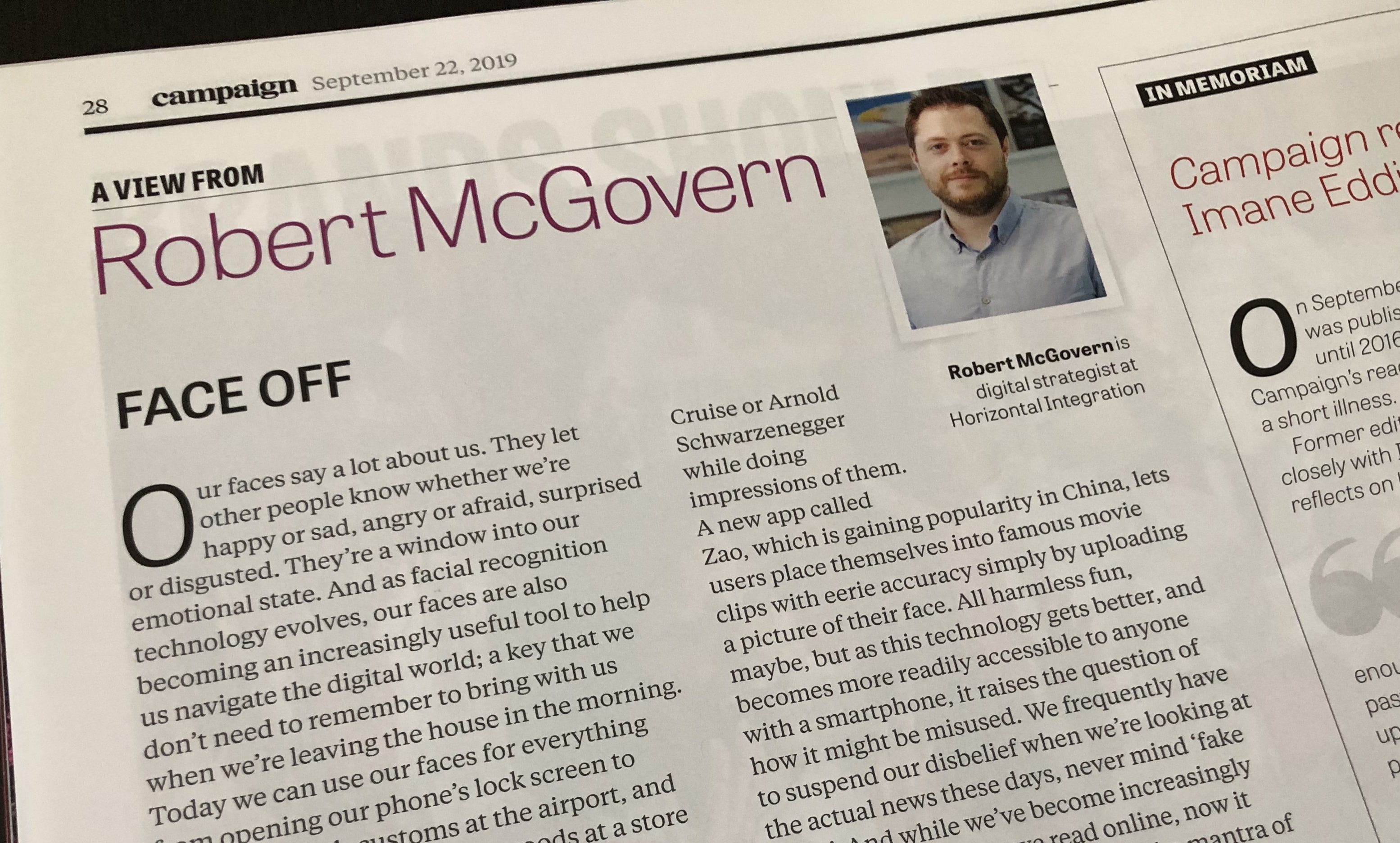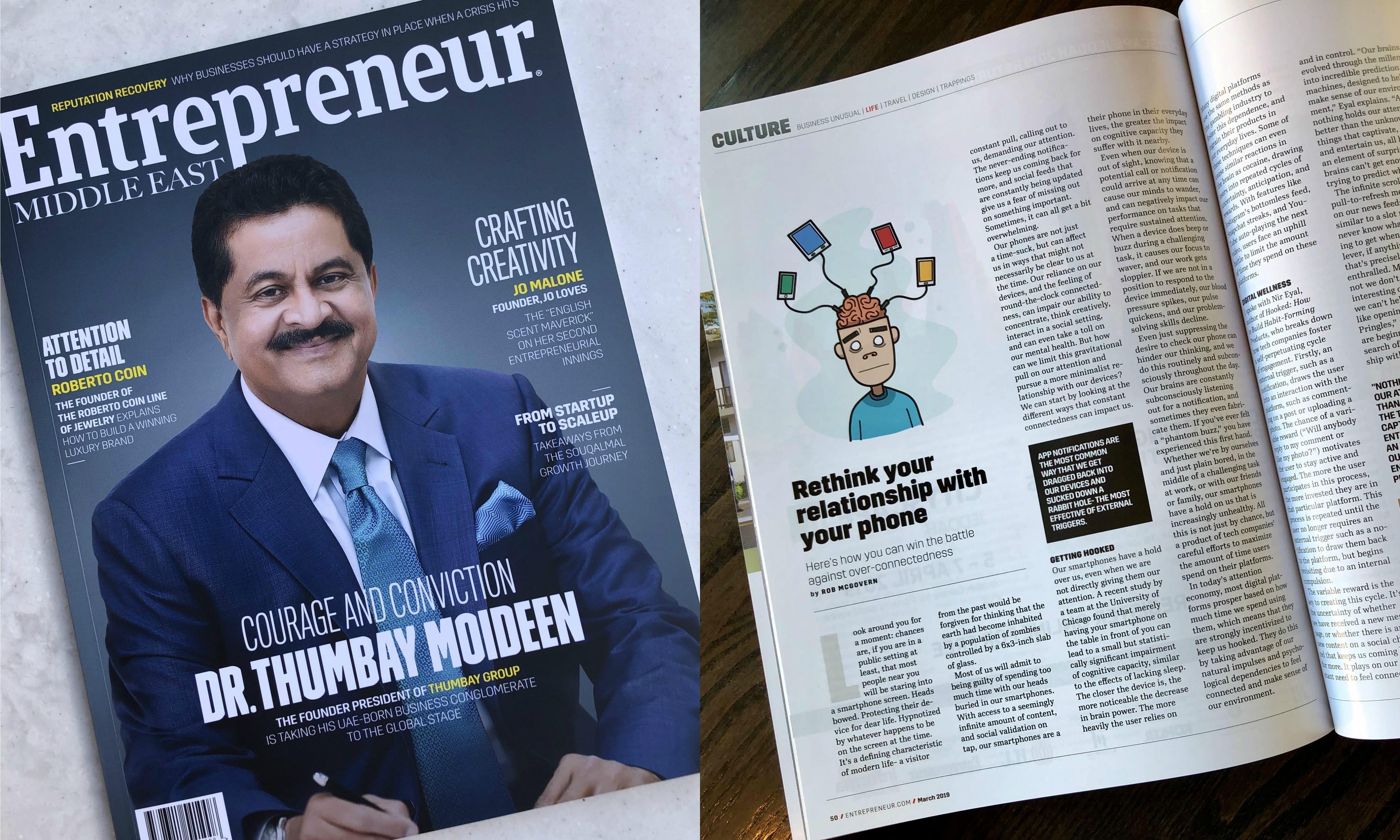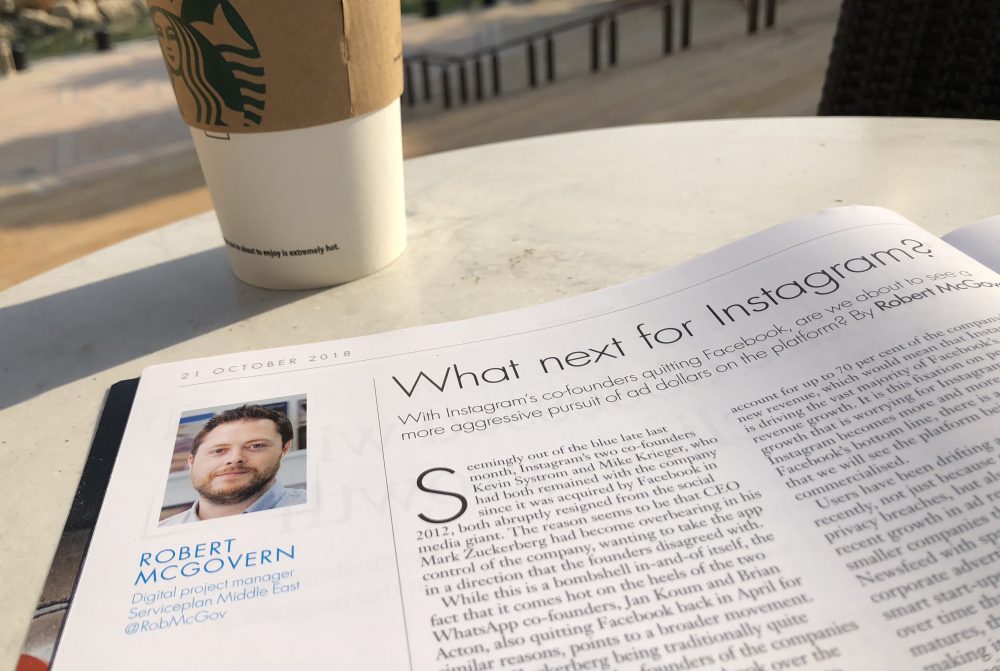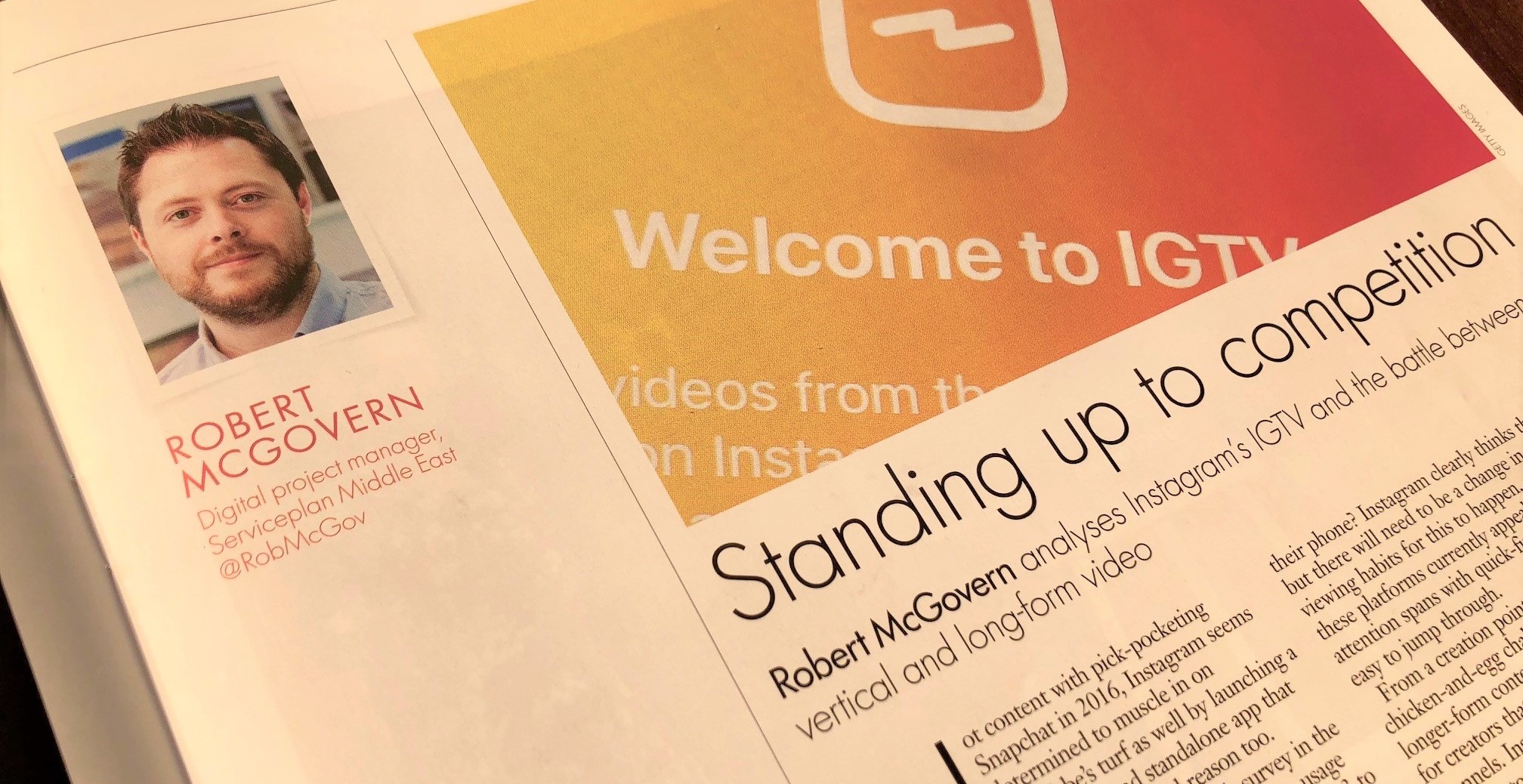Our reliance on our devices and the feeling of round-the-clock connectivity can impair our ability to concentrate, think creatively and interact in a social setting. It can even take a toll on our mental health.
Look around you. Chances are, if you are in a public setting at least, most people will be staring into a smartphone screen. Heads bowed. Protecting their device for dear life. Hypnotized by whatever happens to be on the screen at the time. It’s a defining characteristic of modern life. A visitor from the past would be forgiven for thinking that Earth had become inhabited by a population of zombies controlled by a 6×3 inch slab of glass.
Most of us will admit to being guilty of spending too much time with our heads buried in our smartphones. With access to a seemingly infinite amount of content, and social validation on tap, our smartphones are a constant pull, calling out to us, demanding our attention. The never-ending notifications keep us coming back for more, and social feeds that are constantly being updated give us a fear of missing out on something important. Sometimes it can all get a bit overwhelming.
Our phones are not just a time-suck, but can affect us in ways that might not necessarily be clear to us at the time. Our reliance on our devices, and the feeling of round-the-clock connectedness, can impair our ability to concentrate, think creatively, interact in a social setting, and can even take a toll on our mental health. But how can we limit this gravitational pull on our attention and pursue a more minimalist relationship with our devices? We can start by looking at the different ways that constant connectedness can impact us.
What effect does this have on us?
Our smartphones have a hold over us, even when we are not directly giving them our attention. A recent study by a team at the University of Chicago found that merely having your smartphone on the table in front of you can lead to a small but statistically significant impairment of cognitive capacity, similar to the effects of lacking sleep. The closer the device is, the more noticeable the decrease in brain power. The more heavily the user relies on their phone in their everyday lives, the greater the impact on cognitive capacity they suffer with it nearby.
Even when our device is out of sight, knowing that a potential call or notification could arrive at any time can cause our minds to wander, and can negatively impact our performance on tasks that require sustained attention. When a device does beep or buzz during a challenging task, it causes our focus to waver, and our work gets sloppier. If we are not in a position to respond to the device immediately, our blood pressure spikes, our pulse quickens, and our problem-solving skills decline.
Even just suppressing the desire to check our phone can hinder our thinking, and we do this routinely without thinking about it throughout the day. Our brains are constantly subconsciously listening out for a notification, and sometimes they even fabricate them. If you’ve ever felt a ‘phantom buzz’ you have experienced this first-hand.
Whether we’re by ourselves and just plain bored, in the middle of a challenging task at work, or with our friends or family, our smartphones have a hold on us that is increasingly unhealthy. All this is not just by chance, but a product of tech companies’ careful efforts to maximise the amount of time users spend on their platforms.
How does this tech get us hooked?
In today’s attention economy, most digital platforms prosper based on how much time we spend using them, which means that they are strongly incentivized to keep us hooked. They do this by taking advantage of our natural impulses and psychological dependencies to feel connected and make sense of our environment.
Many digital platforms use the same methods as the gambling industry to foster this dependence and ingrain their products in our everyday lives. Some of these techniques can even cause similar reactions in the brain as cocaine, drawing users into repeated cycles of uncertainty, anticipation and rewards. With features like Instagram’s bottomless feed, Snapchat streaks, and YouTube auto-playing the next video, users face an uphill battle to limit the amount of time they spend on these platforms.
I spoke with Nir Eyal, author of “Hooked: How to Build Habit-Forming Products”, who breaks down how tech companies foster a self-perpetuating cycle of engagement. Firstly, an external trigger, such as a notification, draws the user into an interaction with the platform, such as commenting on a post or uploading a photo. The chance of a variable reward (will anybody reply to my comment or ‘Like’ my photo?) motivates the user to stay active and engaged. The more the user participates in this process, the more invested they are in that particular platform. This process is repeated until the user no longer requires an external trigger such as a notification to draw them back to the platform, but begins revisiting due to an internal compulsion.
The variable reward is the key to creating this cycle. It’s the uncertainty of whether we have received a new message or whether there is any new content on a social channel that keeps us coming back for more. It plays on our constant need to feel connected and in control. “Our brains evolved through the millennia into incredible prediction machines, designed to help us make sense of our environment. And nothing holds our attention better than the unknown” explains Eyal. “The things that captivate, engross, and entertain us, all have an element of surprise. Our brains can’t get enough of trying to predict what’s next”.
The infinite scrolling and pull-to-refresh mechanism on our news feeds are eerily similar to a slot machine. You never know what you’re going to get when you pull that lever, if anything at all. But that’s precisely what keeps us enthralled. More often than not we don’t find anything interesting or gratifying but we can’t help ourselves. “It’s like opening a can of digital Pringles” says Eyal. Users are beginning to push back, in search of a more healthy relationship with their digital selves.
Tech companies are starting to adapt
Somewhat surprisingly, the big tech companies are starting to react to this trend of digital wellness, introducing a host of features to help users monitor and limit the amount of time they spend on their platforms and devices.
Facebook has recently launched a tool that tracks the time you spend each day on the platform, along with your average for the week. It lets users set their own time limits and reminds you when you are reaching or surpassing your threshold. You can even snooze Facebook or Instagram notifications for up to eight hours if you need to focus. Similarly, both Apple and Google have introduced features in the latest mobile OS updates that let you see how much time you’ve spent on each app, broken down by app category, as well as how many notifications you’ve received and how many times you’ve unlocked your phone. Even YouTube has introduced “Take a Break” reminders, as well as a dashboard that provides summaries of your behaviour while on the platform.
“Whenever a product causes people harm, what they will typically do is either use the product less, or they will modify it in some way” suggests Eyal, referring to the explosion of free apps and browser extensions that have come onto the market of late to help us moderate our tech use. At some point, users will have had enough. “So now we see tech companies like Apple and Google incorporate these features to help people moderate their use because it makes the product better. It’s no more than a market imperative”.
These are welcome updates for sure. But like all self-imposed restrictions, they will be simple to ignore, and their effectiveness will depend on whether users have enough self-control to stick to their limits.
Five ways that we can consciously disconnect
These updates might help us regulate the amount of time we spend on our devices, but here are some other techniques that you can use to maintain a more minimalist lifestyle when it comes to technology.
- Monitor your usage
Raising awareness of your own smartphone usage is the first step towards decreasing it. In addition to the big tech firms introducing their own usage-tracking options, there are a bunch of independent apps such as Moment, Space, and Mute that you can use to track the amount of time you spend on your device each day. Seeing this broken down minute-by-minute for the first time can come as quite a shock, and might even inspire you into becoming more deliberate in your behaviour. These apps also introduce a gamification element, challenging you to minimise your usage so you can beat the previous day’s time. It’s surprisingly effective.
- Reduce the amount of notifications you receive
App notifications are the most common way that we get dragged back into our devices and sucked down a rabbit hole – the most effective of external triggers. “About two thirds of people with a smartphone never change their notification settings” notes Nir Eyal. “And guess what – there’s nothing Mark Zuckerberg can do to turn those notifications back on”. You can manage your notifications in your phone settings and limit these to only the most important ones, for example, just messages from real people and not from random apps. Turning off social media notifications can be hugely effective in particular. You’ll see these notifications the next time you open the app again anyway. On messaging apps, try muting the notifications from groups and just set it so that you’re notified when an individual messages you.
- Delete or hide distracting apps
Are there certain apps in particular that you find sucking up too much of your time? Just delete them. You can still log into Facebook, Instagram, Twitter etc. on your mobile’s browser, but this added friction will mean that you’re less likely to do so. If you don’t want to delete these apps completely, then place them in a folder instead. Out of sight, out of mind. By simply removing these apps from your home screen you’re less likely to dive in when you’re aimlessly swiping through your apps looking for something to do.
- Reduce usage just before and after sleep
Using your smartphone just before bed can inhibit your ability to get to sleep and generally impair the quality of sleep you get when you do nod off. One of the most impactful measures you can take is to not sleep with it next to your bed. Buy a simple bedside clock for setting alarms and checking the time so you can charge your device overnight in another room. This will neutralize that impulse to have one last rotation through your most-used apps before going to sleep, and will mean that you can wake up without getting dragged back in before even getting out of bed. Charging your phone in another room throughout the day is generally a good habit to develop too.
- Use the grayscale setting
It might sound surprising, but simply removing your screen’s colour by activating the grayscale setting can reduce your impulse to use it. Colourful icons and graphics stimulate our brains and keep us engaged. That’s why notifications appear in red, because red is a trigger color that draws our attention. A grayscale screen looks less appealing and we aren’t as likely to mindlessly swipe through our device when this setting is activated.
This is not a new problem explains Eyal. “Humans have been struggling with distraction forever. Socrates and Plato talked about it 2,500 years ago. What has changed is that these technologies are constantly with us, and so now we have quickly adopted these new habits, and sometimes these habits don’t serve us.” But all is not lost. We are still masters of our own domain. “There is so much more that you can do as an individual than these tech companies can do to supposedly hook you”. Ultimately, it’s on each of us individually to wrestle back control and limit the hold tech has over us. If we really want to that is.





